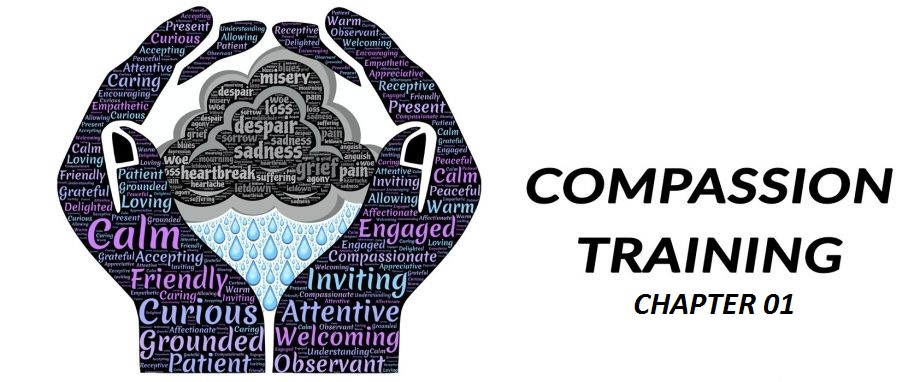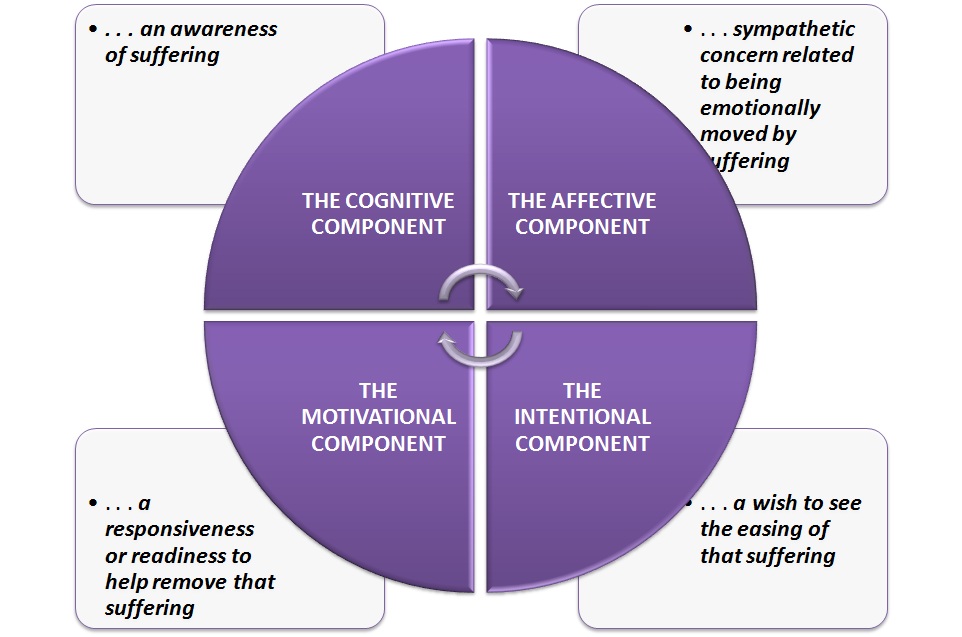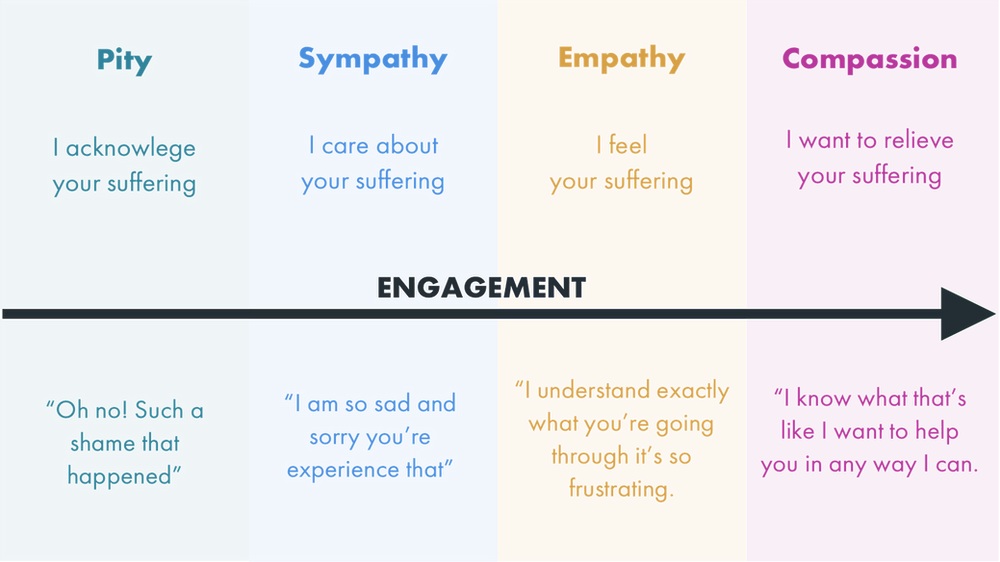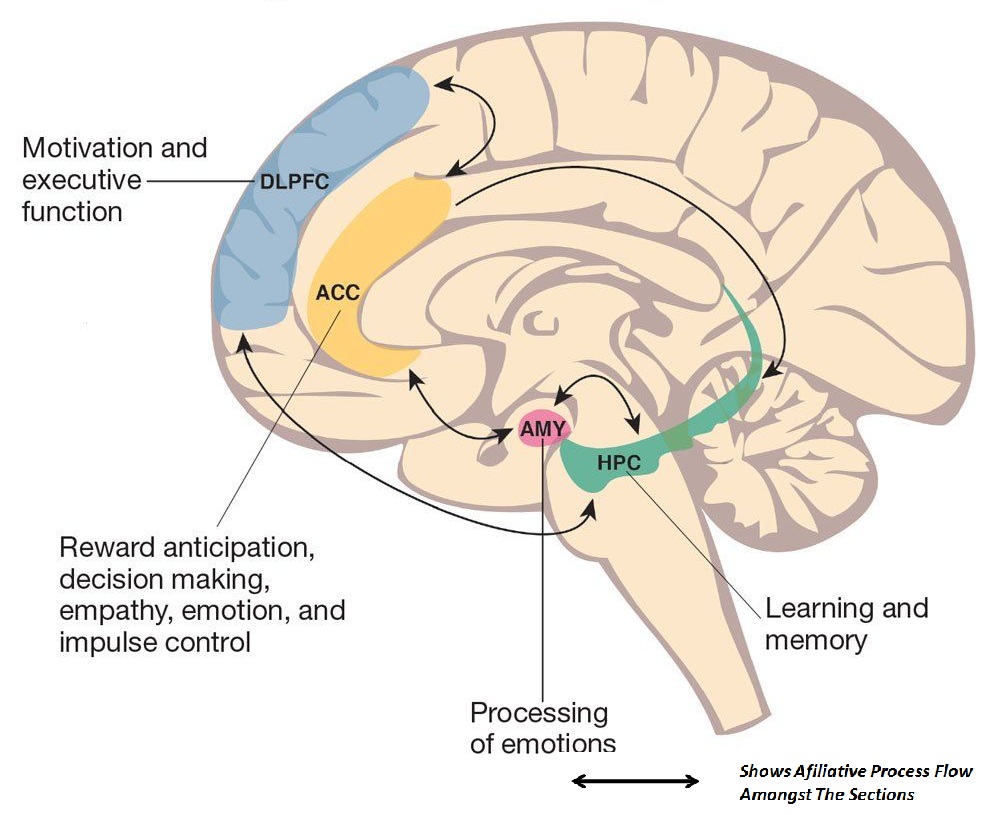
Compassion is an ever-growing area of interest within psychology and psychotherapy. Definitions of compassion within psychology are varied and divergent, with some researchers considering it to be an emotion, a biologically based characteristic, or a multidimensional construct. There is, however, a broad agreement that compassion is comprised of a combination of affective, cognitive, and motivational components. A simple statement is that compassion is a concern for the wellbeing of others. A panel of researchers in 2012 defined compassion as a complex multidimensional construct comprised of four components:

Differentiating Compassion From Related Constructs
Compassion is often misunderstood and easily confused with other related but distinct constructs. While it is important to define compassion, it is equally important to define what it is not. Some of these differing constructs are:
Empathy: . . . . . . . . . . Unlike compassion, empathy does not incorporate the readiness to act in order to relieve the suffering of others, rather it is the ability to understand another’s feelings and become one with that person’s distress. Empathy is described as the capacity to be affected by and share the emotional state of another and identify with the other, adopting his or her perspective.
Sympathy: . . . . . . . . . . . . Similarly, sympathy is the feeling of care and concern for someone which is often accompanied by a wish to see them happier. Sympathy is the experience of feeling sorrow for someone else’s misfortune but not necessarily a shared perspective or shared emotions. With compassion, there is recognition of the other person’s emotional state and a desire to act in order to help.

Pity: . . . . . . . . . . . . Feeling pity for another is essentially an acknowledgment of their plight. Pity refers more to feeling concern for someone thought to be inferior or weaker than oneself and is by definition, rooted in a hierarchical sense of superiority over someone else. Compassion, on the other hand, does not consider the object of suffering to be weak or inferior in any way. Instead, it encourages a broader vision through common experiences.
Altruism: . . . . . . . . . . . . Altruism is acting out of concern for another person’s well-being, while compassion encapsulates an openness to experiencing suffering and responding with genuine concern, and without judgment. Compassion can exist in the absence of altruistic behaviour.
Love: . . . . . . . . . . . . Compassion is functionally distinct from the two most common forms of love; romantic love and the love of a parent for a child. The fundamental difference between the two is that compassion likely involves a complex combination of multiple positive and negative emotions. Where love is generally associated with positive affect and experiences only, compassion is about being open to the experience of suffering.

The Three Orientations of Compassion
Psychological investigations of compassion have primarily focused on three specific orientations of compassion. They are:
Receiving Compassion: . . . . . . . . . The feeling like one does not deserve kindness from others, can create a fear of receiving compassion. For some, being the recipient of compassion can cause avoidance, and negative emotions such as grief or loneliness. Improving this orientation of compassion may enhance relationships and social connectedness by coaching individuals to become more comfortable being the object of another person’s attention.
Self-Compassion: . . . . . . . . . . Self-compassion positively affects coping skills, life satisfaction, emotional intelligence, social connectedness, mastery of goals, personal initiative, curiosity, wisdom, happiness, optimism, and positive affect. A key component of self-compassion is the absence of self-criticism, which is known to be an early predictor of anxiety and depression. Self-compassionate people tend to recognize that imperfection and failure are often unavoidable, and so are more likely to be kind to themselves when confronted with negative experiences.
Compassion for Others: . . . . . . . . . . Compassion for others is not always expressed and can actually be suppressed or inhibited. It was initially thought that self-compassion and compassion for others may be related given they have the same theoretical structure and base definition. Research has, indicated that the two may be different because:
- Compassion is directed towards others as opposed to the self.
- Individuals are often more compassionate to others than they are themselves.
Can Compassion Be Developed?
Compassion can be adopted at any age and involves training the mind to develop specific skills in order to relate to others and to ourselves, and making a conscious effort to think and act in a compassionate manner. While everyone has, to some degree, a level of compassion, for some it can be beneficial to develop these skills further. Fortunately, developing compassion does not require years of commitment and can actually be advanced quite rapidly.
Much of the emphasis within compassion-based training is on stimulating a more compassionate social mentality. Compassion-based training works by activating affiliative processing systems in the brain. These processing systems include the myelinated parasympathetic nervous system which helps in the regulation of our fight/flight response.

Activation of the parasympathetic system when under a perceived threat encourages a feeling of safeness and security, and allows for mentalization, that is the ability to understand our own mental state.
Compassion training focuses not only on suffering but also on supporting and encouraging compassion for the good of the self and others. Through a range of breathing, postural, imaging techniques and developing recall skills that enable the recall of experiencing compassion, individuals are given the opportunity to experience what compassion is, or could be. In essence, compassion training helps to create ideas in the mind about what can be achieved. With positive effects on mental health, emotion regulation, and interpersonal and social relationships, it is clear that developing compassion can have significant and far-reaching benefits.
***To be continued in Chapter 02 (Cultivating compassion, Measuring Compassion, Ways to build compassion in daily routines) Link to Chapter -02:

Content Curated By: Dr Shoury Kuttappa.

